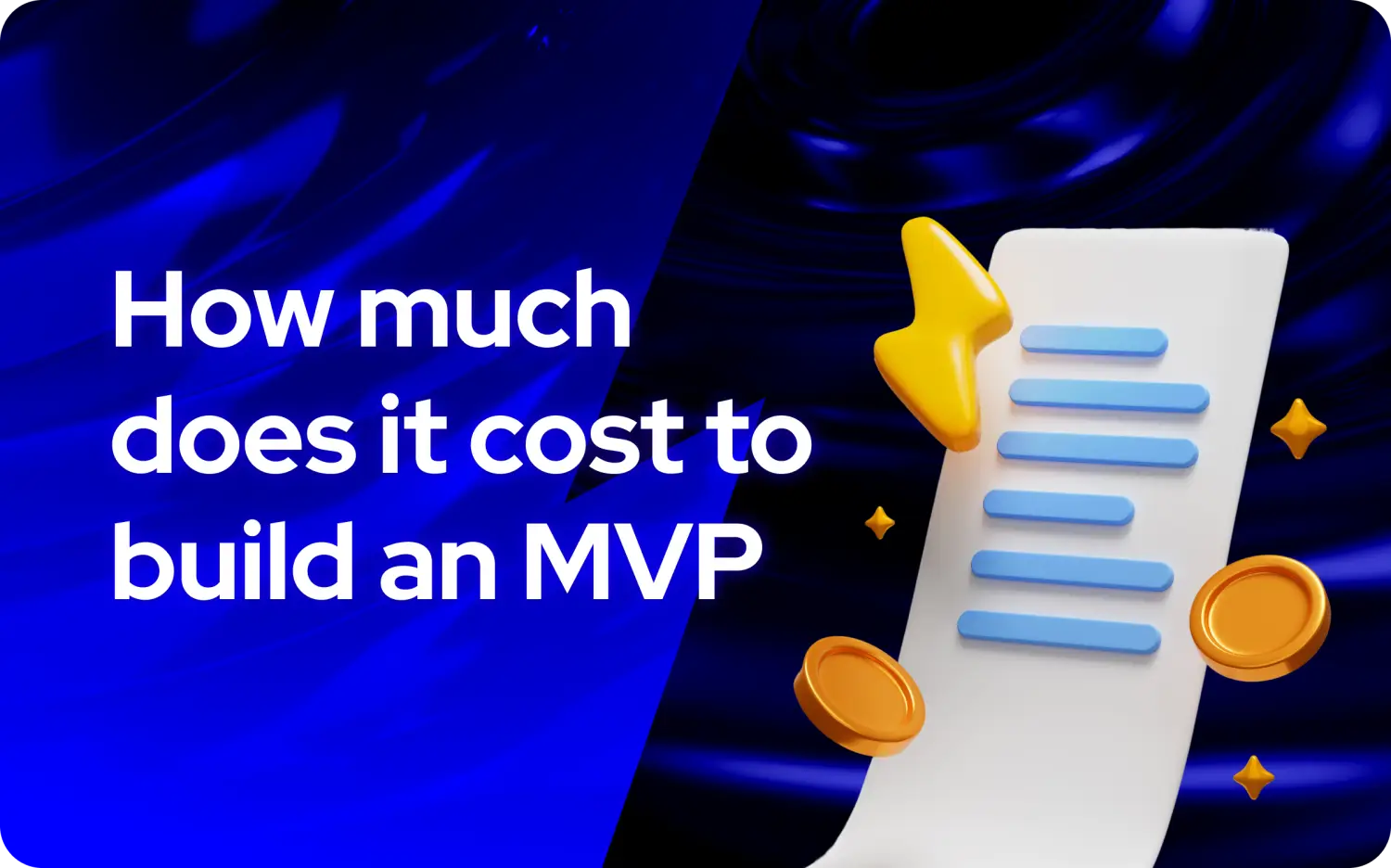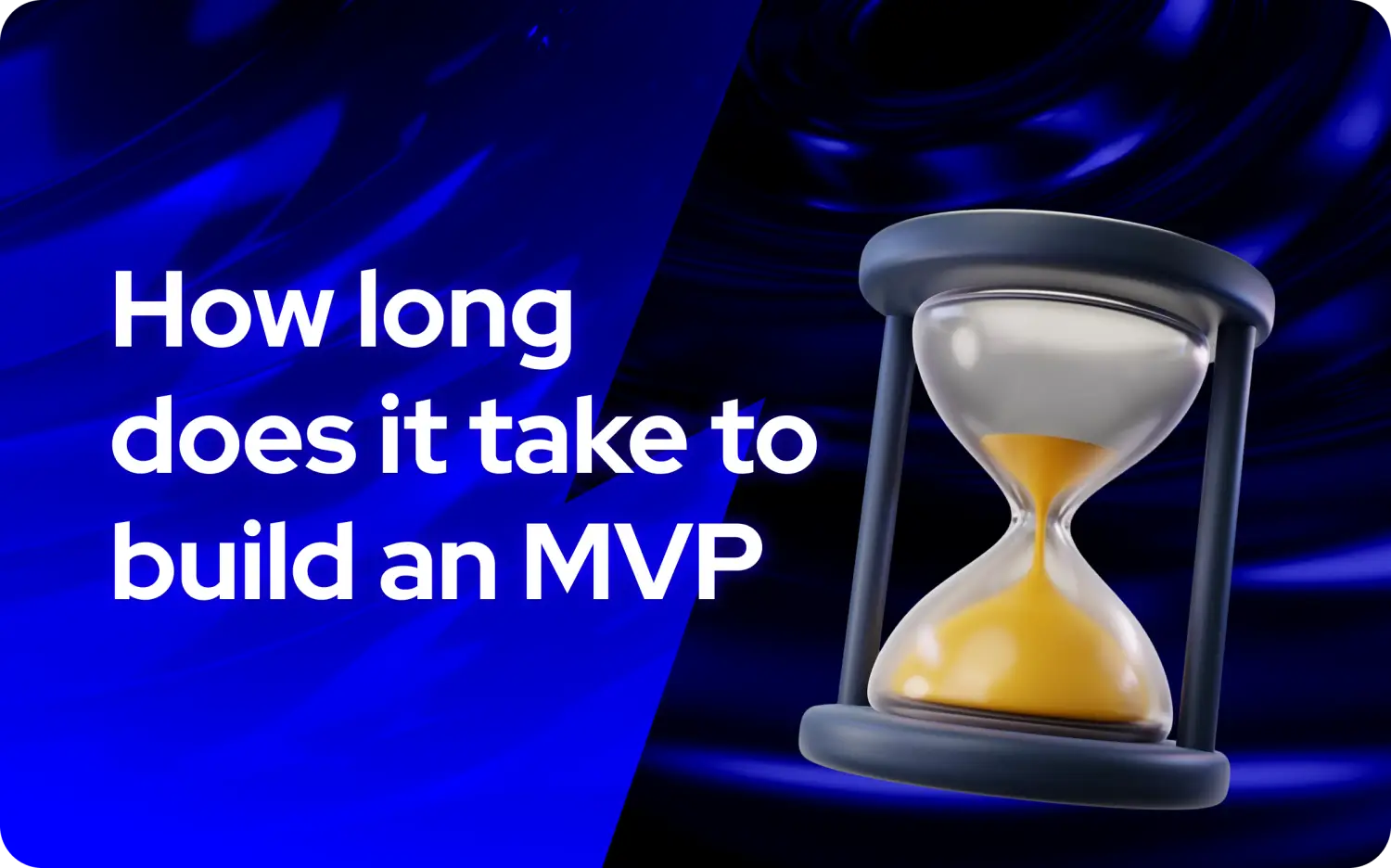
So you're wondering how much your MVP will actually cost? This question keeps founders up at night. The honest answer? Anywhere from €15K to €150K+, but that range is basically useless without context.
Here's what actually matters: I've watched startups blow through €200K building beautiful products nobody wanted, while others spent €20K on ugly-but-functional MVPs that generated millions. The difference wasn't the money, it was understanding what they were really buying.
Quick reality check: Most MVPs cost between €15K-€300K depending on your team and complexity. Use the 70-20-10 rule (70% core features, 20% polish, 10% surprises). No-code can slash costs by 60-80%. And yes, location matters US developers cost €100-200/hour while Eastern European devs charge €40-80/hour for similar quality.
Here's the brutal truth: Hidden complexity multipliers like real-time features can triple your timeline. Phased investment beats throwing money at problems. And most importantly, your MVP budget should buy you answers, not features.
What actually drives your costs
Three things will make or break your budget, and most founders obsess over the wrong ones. Feature count isn't your biggest enemy, it's team choice, hidden complexity, and geography. Let me break down what actually matters.
The biggest mistake? Thinking about upfront development cost instead of total investment to reach meaningful validation. I've seen "cheap" MVPs that needed three expensive rebuilds versus "expensive" ones that scaled smoothly to millions in revenue.
Your team choice
Here's the real talk on team costs:
Freelancers: €25-150/hour. Cheap but risky, you get what you pay for. Great for simple projects, nightmare for complex ones. I've seen €30/hour freelancers deliver better work than €100/hour "experts," and vice versa.
Agencies: €75-200/hour. More expensive upfront but fewer surprises. They handle project management, quality assurance, and have backup developers when someone gets sick.
In-house developers: €150K-300K annually. Full control but massive fixed costs. Only makes sense if you're building a tech company where development is your core competency.
Offshore teams: €20-80/hour. Great savings if you can handle timezone headaches and communication barriers. Pro tip: budget an extra 20-30% for coordination overhead.
When evaluating different approaches to control costs, many startups find that building an MVP with no-code development services offers significant advantages in both speed and budget predictability.
The hidden costs kill you. In-house developers need benefits, equipment, and management time. Freelancers require more hands-on project management. Agencies might seem expensive but often deliver faster with predictable timelines.
Feature complexity
Every feature adds development time, but some create exponential complexity rather than linear increases. User authentication takes 40-80 hours. Basic CRUD operations need 10-20 hours each. But real-time notifications? That "simple" feature can double your entire timeline.
I've made this mistake myself spending three weeks building an admin dashboard that literally zero users cared about during validation. The hardest part of MVP development is saying no to features that seem important but don't validate your core hypothesis.
The complexity killers:
- Real-time features (chat, notifications, collaboration)
- Multi-user permissions and data isolation
- Payment processing and security compliance
- Third-party integrations (they're never as simple as the docs suggest)
Here's what actually matters for your first version: Can users sign up, perform your core action, and give you feedback? Everything else goes in the "later" pile.
Real-time features are budget killers. What seems straightforward requires WebSocket connections, state synchronization, conflict resolution, and offline handling. These features easily double your development timeline.
Technology and platform decisions
Technology choices create ripple effects throughout your budget. Native mobile apps require separate iOS and Android development, potentially doubling costs versus cross-platform solutions. Web applications often provide the most cost-effective starting point.
Consider a fitness tracking app. Building native iOS and Android versions separately costs €80K-€120K total, while React Native gets you 90% of the functionality for €50K-€70K. The trade-off? Slightly reduced performance that probably won't matter for initial validation.
I've seen founders get caught up in technical perfectionism during MVP stage, choosing complex architectures that add months to development time. Your tech stack should enable rapid iteration, not showcase engineering prowess.
Geographic reality check
Location dramatically impacts hourly rates, but the cheapest option isn't always most economical. US-based development runs €100-200/hour, Eastern European developers charge €40-80/hour with comparable quality, and Asian markets offer €20-50/hour rates.
But here's the catch: communication barriers and timezone differences can add 20-30% to project timelines. A simple question that takes five minutes during overlapping hours might require 24-48 hours across different timezones.
I've seen offshore projects that seemed cheap upfront end up costing more than domestic development due to communication issues and rework requirements.
Smart budget planning that won't bankrupt you
Most founders approach budgeting backwards; they start with available money and try to build something within that constraint. The smarter approach? Figure out what you need to validate your core assumptions, then find the most cost-effective way to build that validation mechanism.
Before diving into detailed budget planning, it's crucial to understand how to plan your MVP strategically to ensure every dollar contributes to meaningful market validation.
Your budget should buy you learning, not just software. Every feature should help prove or disprove key assumptions about your market, users, and solution.
The 70-20-10 Rule That Actually Works
Allocate 70% of your budget to core functionality that addresses your primary user problem. Reserve 20% for user experience polish and basic integrations that enhance usability. Keep 10% for unexpected complexity and post-launch fixes that always emerge during real user testing.
For a €100K budget: €70K goes to core features like user registration, main functionality, and basic data management. €20K covers UI/UX improvements, mobile responsiveness, and essential integrations. €10K stays reserved for bug fixes, performance optimization, and technical challenges discovered during user testing.
This framework prevents the common trap of spending too much on polish before validating core functionality. I've seen beautiful MVPs that nobody wanted to use because the core problem-solution fit wasn't there.
Phased investment strategy
Structure your investment across multiple phases to reduce risk and enable learning. Phase 1 focuses on core problem validation (€15K-€40K), Phase 2 adds user experience improvements (€10K-€25K), and Phase 3 incorporates user feedback and scaling preparations (€5K-€15K).
Phased investment lets you validate assumptions before committing your entire budget. You might discover after Phase 1 that your core hypothesis is wrong, saving you from investing in features nobody wants.
Each phase needs clear success metrics and decision points. What user behavior would trigger moving to the next phase? What would cause you to pivot or stop entirely?
Managing the budget killers
Scope creep represents the biggest threat, often adding 30-50% to original estimates. "Can we just add a simple admin panel?" turns into weeks of additional development when you consider user management, permissions, and reporting requirements.
Integration complexity gets underestimated during initial planning. Connecting to third-party APIs seems straightforward until you encounter rate limits, authentication complexities, and data transformation requirements.
Build a 25-30% contingency buffer for unexpected complexity. Structure contracts with clear change order processes and plan for at least two rounds of significant user feedback incorporation.
User feedback will reveal assumptions you got wrong. Budget for these changes often provide the most value in terms of product-market fit improvement.
Development approaches that actually save money
The development landscape has changed dramatically. Tools that were considered "toy" solutions now power million-dollar businesses. I've personally built MVPs using no-code tools that would have cost €100K+ with traditional development, completing them in weeks instead of months for under €20K.
According to recent industry analysis, the MVP development landscape in 2024 prioritizes informed decisions, flexibility, and adaptability. Startups leverage simplified versions to capture market opportunities more efficiently while minimizing initial costs.
No-Code solutions that don't suck
No-code isn't just for simple stuff anymore. Development costs typically range from €5K-€25K compared to €50K-€150K for custom development, with time to market reducing from months to weeks.
For founders considering no-code solutions, understanding how to build an MVP with Bubble provides a comprehensive framework for leveraging visual development platforms effectively.
The stigma around no-code is disappearing as platforms become more sophisticated. I've seen no-code MVPs handle complex workflows, integrations, and user management that would have required months of custom development.
When No-Code makes financial sense:
No-code works best when your MVP focuses on business logic and user workflows rather than complex algorithms or real-time processing. If your core value proposition connects users, manages data, or automates processes, no-code platforms handle these requirements effectively.
The financial benefits extend beyond initial development. No-code platforms often include hosting, security, and basic analytics, reducing operational overhead during early stages.
Hybrid development for maximum flexibility
Combine no-code tools for rapid prototyping with custom development for unique functionality. Use no-code platforms to validate core assumptions quickly, then migrate critical components to custom code as you scale. This approach can reduce initial development costs by 60-80% while maintaining long-term flexibility.
You might build your core user interface with no-code while developing custom APIs for specific business logic. This gives you rapid validation with the flexibility to scale unique functionality.
I've helped founders transition from no-code MVPs to custom development after proving product-market fit. The key is choosing platforms that support this transition rather than trapping you in their ecosystem.
Lean development that saves money
Lean methodologies fundamentally change how you think about development costs. Instead of building everything upfront, you build the minimum needed to test your riskiest assumptions.
Recent research shows that with AI set to hit €1.84 trillion by 2030, startups increasingly adopt lean methodologies to validate AI-driven solutions before making heavy investments, ensuring their technology solves real problems rather than creating impressive but unused features.
Build-measure-learn implementation:
Start with the smallest possible feature set enabling meaningful user feedback. Implement basic analytics and user feedback collection from day one, planning for weekly iteration cycles based on real user data rather than assumptions.
Weekly iteration cycles prevent you from spending months building features based on untested assumptions. Short cycles make it easier to incorporate user feedback before you've invested too heavily in any particular approach.
Validation before development:
Validate core assumptions with landing pages, mockups, and manual processes before writing code. Interactive prototypes using tools like Figma can test user workflows for a few hundred dollars instead of thousands in development costs.
Manual validation often reveals that you don't need to build what you originally planned. I've seen founders discover through user interviews that their target market wanted a completely different solution.
Real-world cost examples by industry
Different industries carry distinct cost profiles based on technical requirements, user expectations, and market demands. Healthcare MVPs need HIPAA compliance, fintech applications require security audits, and social platforms need content moderation systems.
Understanding your industry's specific requirements helps you budget accurately and avoid surprise costs during development.
Mobile app reality check
Mobile applications represent the most common MVP type with dramatically varying costs based on platform choices and feature complexity.
When planning mobile app development, many founders benefit from understanding how to build an MVP app that balances functionality with cost-effectiveness from the start.
Platform Economics:
Native iOS development typically costs €40K-€120K for basic MVPs, while Android ranges €35K-€100K due to device fragmentation. Cross-platform solutions using React Native or Flutter can reduce total costs to €50K-€80K while covering both platforms.
Cross-platform development has matured significantly, offering near-native performance for most MVP use cases. The cost savings come from shared codebase maintenance and faster feature development across platforms.
Device fragmentation on Android creates additional testing and optimization costs that many founders underestimate. Supporting the wide range of Android devices and OS versions can add 20-30% to development time.
App store hidden costs:
App store submission processes add €2K-€5K in additional costs for proper testing, compliance, and review preparation. Ongoing app store fees, push notification services, and cloud hosting typically add €200-€500 monthly to operational costs.
App store optimization and compliance requirements often get overlooked during initial budgeting. Apple's App Store Review Guidelines and Google Play policies require specific implementations that can add development time.
Push notification infrastructure, crash reporting, and analytics services create ongoing operational costs that accumulate quickly. These services are essential for mobile MVPs but represent recurring expenses beyond initial development investment.
SaaS platform investments
Software-as-a-Service MVPs require different cost considerations due to subscription-based nature and scalability requirements. Users expect reliable performance and data security from day one, increasing upfront development costs but enabling faster feature additions later.
Infrastructure reality:
SaaS MVPs need robust backend architecture from day one, typically adding €15K-€30K to development costs. Database design, API architecture, and user management systems require significant upfront investment but enable rapid feature additions later.
Scalable architecture decisions made during MVP development impact long-term costs significantly. Poor initial choices can require expensive rewrites as you grow, while good architecture enables cost-effective scaling.
Multi-tenant architecture, data isolation, and performance monitoring become critical considerations. These requirements add complexity but are necessary for subscription-based business models.
Subscription management complexity:
Implementing subscription billing, trial management, and payment processing adds €8K-€20K to development costs. Integration complexity with services like Stripe, handling failed payments, and managing subscription lifecycle often takes longer than anticipated.
A project management SaaS MVP requires user authentication (€5K), basic project creation and task management (€25K), team collaboration features (€15K), subscription billing integration (€12K), and essential reporting (€8K), totaling €65K before UI/UX polish and testing phases.
Subscription billing extends beyond simple payment processing. You need prorations, upgrades, downgrades, failed payments, and dunning management. These features often require more development time than core application functionality.
E-commerce and marketplace MVPs
E-commerce MVPs carry unique cost considerations due to payment processing, inventory management, and user trust requirements. Trust and security become paramount. Users need confidence before sharing payment information.
Payment gateway integration:
Secure payment processing implementation typically costs €10K-€25K including PCI compliance, fraud prevention, and multiple payment method support. International payment processing can double these costs due to currency conversion and regulatory compliance.
Payment gateway integration involves more than connecting to Stripe or PayPal. You need error handling, webhook processing, refund management, and dispute resolution workflows.
International processing adds complexity through currency conversion, tax calculation, and country-specific payment methods. These requirements can significantly increase development costs for global marketplaces.
Trust and security features:
E-commerce MVPs require SSL certificates, secure user authentication, and data protection measures adding €5K-€15K to development costs. User review systems, seller verification, and dispute resolution features can add another €10K-€20K for marketplace applications.
User review and rating systems seem straightforward but require moderation tools, spam prevention, and reputation management features. These systems become critical for marketplace trust but add significant development complexity.
Seller verification and dispute resolution processes require workflow management, document handling, and communication systems between multiple parties. These features often take longer to develop than core marketplace functionality.
Timing strategies that make or break budgets
Market timing can make or break your MVP's success, but rushing development often creates more problems than it solves. The relationship between development speed and cost isn't linear, understanding these dynamics helps optimize your investment timing.
Timeline pressure creates hidden costs through overtime work, parallel development streams, and increased coordination overhead. These costs often exceed the benefits of faster market entry unless you have a clear first-mover advantage.
Rush development reality
Want to rush development? It'll cost you 25-50% extra and create technical debt you'll pay for later. Rush development often creates technical debt that costs more to fix than doing it right initially.
Quick fixes and shortcuts during development create maintenance burdens that slow down future iterations. The premium for rushed timelines comes from reduced efficiency and increased error rates. Developers working under extreme time pressure make more mistakes that require expensive fixes later.
Optimal development pacing
The sweet spot is 8-16 weeks long enough to do it right, short enough to avoid scope creep. Most MVPs benefit from this timeframe that balances speed with quality. Shorter timelines often result in technical debt costing more to fix later, while longer timelines risk scope creep and market timing issues.
Optimal pacing allows for proper testing, code review, and iteration based on early feedback. These quality assurance activities prevent expensive bugs and usability issues that could derail your launch.
Longer development cycles risk scope creep as stakeholders have more time to request additional features. Clear project boundaries and regular milestone reviews help maintain focus on core MVP objectives.
Team scaling economics
Managing development teams effectively requires understanding how team size impacts both costs and coordination complexity. Teams of 2-4 developers often provide the best cost-efficiency for MVPs, with total costs ranging from €80K-€200K including project management.
For startups looking to optimize their development approach, understanding the MVP development process helps structure teams and timelines for maximum efficiency.
Small teams communicate more efficiently and make decisions faster, reducing overhead that slows down larger teams. Each team member understands the entire system, making changes and bug fixes more straightforward.
Large teams can work on multiple features simultaneously but require more project management, code integration, and quality assurance processes. These overhead costs often offset theoretical speed benefits for MVP-sized projects.
For founders looking to navigate these complex decisions while maximizing development speed and minimizing waste, partnering with experienced no-code specialists like Minimum Code can provide the perfect balance. Their approach of validating ideas through user research, rapid prototyping, and strategic use of no-code tools helps founders avoid the common trap of building features nobody wants while keeping development costs predictable and timelines short.
Final reality check
Building an MVP doesn't have to drain your bank account or take forever. The key is understanding that cost isn't just about upfront development investment, it's about making smart decisions that balance speed, quality, and learning potential.
I've seen too many founders get caught up in building the "perfect" product from day one, only to discover their users wanted something completely different. The most successful MVPs I've encountered focused on solving one core problem exceptionally well, then iterated based on real user feedback.
Whether you're just starting your journey or refining your approach, learning how much it costs to develop a web app using traditional vs no-code approaches can help you make informed decisions about your development strategy.
Whether you choose traditional development, no-code solutions, or a hybrid approach, remember that your MVP is just the beginning of your journey. The goal isn't to build something perfect, it's to build something that teaches you what your users actually need while keeping your runway intact for the iterations that matter.
Your MVP investment should buy you validated learning about your market, not just a piece of software. Focus on building something that generates meaningful user feedback and market insights, then use those learnings to guide your next development decisions.
Bottom line: Your budget should buy you answers, not features. Focus on building the smallest thing that proves or disproves your biggest assumption. Everything else can wait until you know people actually want what you're building.

Ready to build your product?






.avif)


